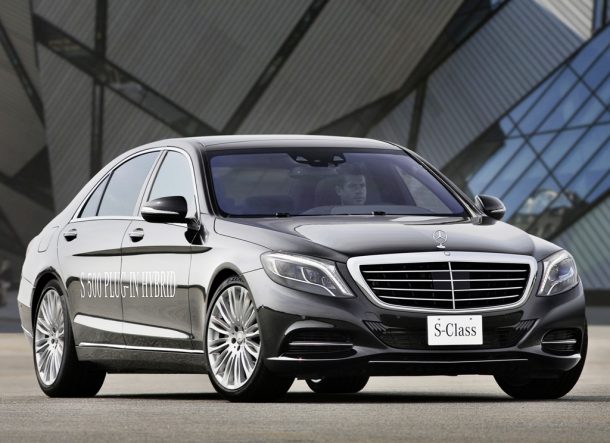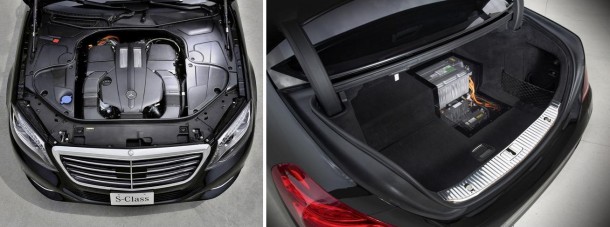Mercedes S500 hybrid goes for miles with low emissions

LOOKING for a luxury car which offers superb fuel consumption and low CO2 emissions?
Then look no further, according to Mercedes-Benz.
They claim the new S500 plug-in hybrid sets the benchmark for luxury saloons with figures for CO2 emissions as low as 69g/km and fuel consumption figures reaching 94.2mpg. Not bad for a large luxury saloon.
This is the third hybrid model from the German manufacturer, and they say it is a genuine 3.0-litre car that can cover 100 kilometres with just three litres of fuel. The 80-kW electric drive with externally rechargeable battery makes emission-free driving for about 18 miles possible. It is combined with the new 3.0-litre V6 turbocharged engine. Mercedes-Benz will present the car at the Frankfurt Motor Show prior to a market launch next year.
While the batteries of the S400 hybrid and S300 BlueTec hybrid as autonomous hybrids are charged during braking or coasting or by the combustion engine, the new high-voltage lithium-ion battery of the S500 has 10 times the energy content and offers the option of being recharged from an external source with a charging socket located on the right side of the rear bumper. With the help of the electric synchronous motor (80 kW/340 Nm) the S-Class can thus drive for up to around 18 miles on electric power alone.
Four hybrid operating modes can be selected at the push of a button: Hybrid, E-Mode, E-Save and Charge.
The second-generation S-Class hybrids feature an anticipatory energy management system and thereby improve energy efficiency. The operating strategy of the hybrid drive system not only accounts for the current driving condition and driver input, but also adjusts to the likely route (inclines, downhill stretches, bends or speed limits) for the next five miles. Intelligent HYBRID uses the navigation data from COMAND Online to manage the charging and discharging of the high-voltage battery. The goal is, for example, to use the energy content of the battery for propulsion ahead of a downhill stretch in order to recharge it while going downhill using recuperation.
The largest potential for lowering the energy consumption of hybrid drive systems lies in maximising energy recovery during coasting and braking. Upon depressing the brake pedal the deceleration is initially effected by the electric motor and not by the disc brakes. The new S-Class is the first to use a recuperative braking system (RBS) of the second generation. It ensures an unnoticeable overlapping of the conventional mechanical brakes and the electric braking performance of the electric motor in alternator mode.
The driver’s desired braking power is recorded by a pedal-travel sensor. The deceleration is dependent on the driving condition and is split into a recuperative brake-force portion and a portion to be supplied by the wheel brakes. The brake pressure on the rear axle is controlled by the RBS dependent on the current recuperation potential of the powertrain.
In addition, the combustion engine is switched off any time the vehicle is coasting and its drag torque when rolling is used by the electric motor as recuperation torque. However, without depressing the brake pedal no additional deceleration torque is provided for charging the battery and the vehicle can “sail”. The combustion engine is to be used for charging the battery as little as possible and only at suitable and most efficient operating points.
http://www2.mercedes-benz.co.uk

